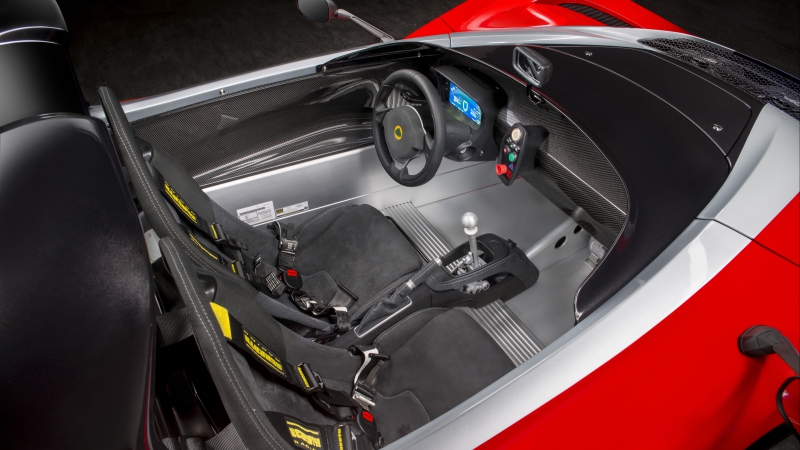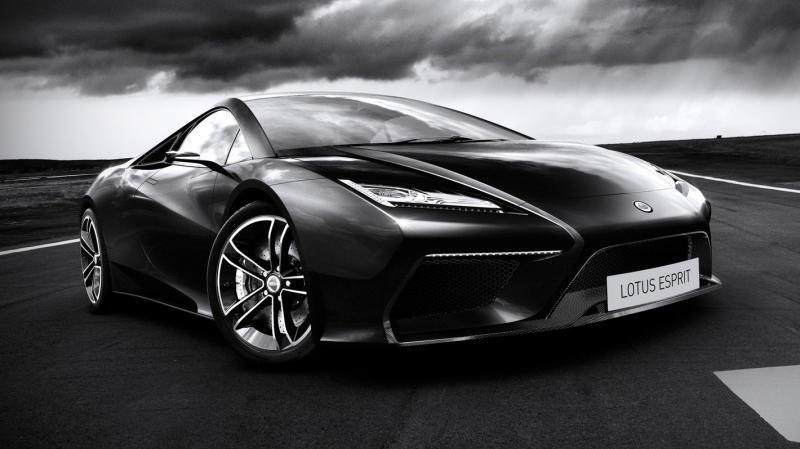Looks like the next few years is going to be an interesting time for Lotus. The Hethel-based company’s new owners, Chinese car-maker Geely, has been reportedly drawing up a £1.5 billion-plus investment to revitalise it. And if the developments over the last few months have been any clear indication, it won’t be yet another Bahar-

Last December, Autocar caught wind of Lotus’ top secret £2 million electric hypercar in development. Codenamed the Omega, the report mentions a rather ambitious public debut deadline of 2019 for the hypercar, though the recent announcement of Lotus’ technical partnership with Williams Advanced Engineering in the development of “advanced propulsion technologies” lends a touch of credence to the rumour.
Adding to that, Geely has also filed plans to build a new £1 billion factory in Wuhan, China which is said to be capable of churning out all-electric and hybrid cars and is earmarked to produce “Geely’s Lotus project”, which many believe will be the forthcoming Lotus SUV.

News of a raised Lotus is nothing new in the automotive industry as the company has been mulling the idea for years. With luxury SUVs segment growing, particularly in China, it wouldn’t be surprising for Geely to ensure that an SUV is high on Lotus’ agenda. After all, as the success of the Porsche Cayenne had clearly demonstrated, performance SUVs is the sure fire way to generate a hearty profit.
Furthermore, Lotus now has something that is previous owners never had, cash and technology. Plenty of it. Buoyed by the news of its first recorded profit in years, coupled to Geely’s massive capital injection, and Volvo’s warchest of parts and tech, Lotus now has all the resources it needs to finally pull it off, though in doing so raises an existential question of whether they should do it this soon.

Before you protest, this isn’t another rant of how SUVs are spoiling “brand image”, The Motor Muse has once trashed the notion of the “superiority” of premium brands and even advocated the Lamborghini Urus as being “on message” with the brand’s values. The internet is already bursting at the seams with like-minded opinions on that matter as well. Quite the opposite, Lotus’ plan to build an SUV is a sound course of action to secure its future. If it is of any consolation for fans is that such a model won’t spoil Lotus’ brand image simply because there isn’t much left of it, to begin with.
Now if you are a car enthusiast who can immediately spout off Colin Chapman’s inspirational mantra “simplify, then add lightness”, chances are you won’t be too thrilled with the news of Lotus staking their fortunes on the antithesis of its founder’s engineering ideology and nothing Lotus will do will convince you of an SUV model’s legitimacy. But Geely has its sights trained on an entirely different audience with the hope that Lotus’ SUV, which many speculate will be built on Volvo’s architecture and parts, will be able to muscle in on Porsche’s luxury SUV stranglehold.

Building a Cayenne or Macan competitor is relatively straightforward, though what isn’t as straightforward is selling it, as few outside the car enthusiast community really knows what Lotus even is. Even if they vaguely recognise it as a former Formula One manufacturer who once gave Ferrari a run for its money, fostered the great Ayrton Senna, and pioneered the art of aerodynamics and the the art of selling out, its core identity as a maker of barebones and focused driver’s cars doesn’t resonate with a crowd looking for a bodystyle that delivers comfort and practicality with a healthy side of performance and handling. Not to mention this is a company that was founded by a man who once said “any car which holds together for a whole race is too heavy”.
While fans of Porsche, Lamborghini, and Bentley would deride the Cayenne, Urus, and Bentayga for muddying the identity and legacy of its creators, its buyers aren’t drawn to it merely for the merits of its maker’s past and present product line-up but for its brand prestige. Porsche, in the eyes of the non-enthusiast, is a symbol of success, Bentley and Rolls-Royce the pinnacle of luxury, as is Lamborghini and Ferrari being the pure manifestation of one’s wildest dreams. By comparison, the Lotus name is more associated with bathtubs on wheels than wheeled drawing rooms.

The closest thing Lotus ever had to a ‘luxury’ equipped model was the V8-equipped Lotus Esprit of the 1990s. However, since the inception of the lightweight Elise in 1994 and the financial troubles of the late-1990s, Lotus had focused too much of their attention on building spartan lightweight cars that appealed to a very niche and very loyal audience. Harp all you want about class-leading ride and handling, the general public is more interested in the bragging rights of a badge, and as the Esprit steadily fade into history, so too did the Lotus name fade from the public conscience.

Lotus’ diminishing market presence isn’t helped by the fact that the company’s last all-new model architecture – the Evora – is a decade old, and the company’s survival in the last decade following Bahar’s spectacular flameout largely hinged on a quick succession of variants spun off from the ageing Elise, Exige, and Evora model lines.
Even though all three model lines are still able to throw punches in its class, the wrinkles and patina of age are beginning to show even from between the lines of optimistic reviews from the British automotive press. In the stratified world of luxury and performance, where the adage “new is always better” is gospel, an aspirational brand Lotus’ survival strategy will not make.

If further evidence is needed, look no further than Maserati, who faced broadly the same circumstance as Lotus over the last decade. Like Lancia, Maserati was largely neglected by its parent company FCA resulting in a dearth of exciting new models.
For several years the company subsisted on the Quattroporte, whereas the Gran Turismo soldiered on for an incredible 12 years and counting, all the while the late Sergio Marchionne dawdled on the brand with no firm directions or commitment.

The absence of new metal to drum up some buzz caused the brand to steadily disappear from the public conscience, and even though Maserati introduced the Ghibli sedan and the Levante SUV in more recent times, it hasn’t been pulling in the desired numbers, particularly when it came to the Levante. Though sales of the Trident-wearing SUV has been rising and now accounts for around half of Maserati’s total sales in 2017, it still falls way off Maserati’s target of selling 75,000 cars globally by 2018 with only 22,500 Levantes sold.
Compare that with Porsche, where a 61 per cent share of its total sales last year comprised of the Cayenne and Macan, making Porsche a predominantly SUV-maker, whose gilded status is only protected by the constant and continual introduction of new sports car models and variants.

Mind you, this is Maserati we are talking about, one of the automotive world’s most prestigious and oldest names, who was responsible for some of the most iconic luxury grand tourers. Even with such clout, they couldn’t stir the
As it stands now, Lotus doesn’t have the luxury of prestige one expects from a high-end brand to guarantee demand for its SUV model. What Lotus needs is a flagship that will return the Lotus name back to prominence. A flagship quite like the Esprit concept that was birthed from Dany Bahar’s ambitious five-car plan in 2010.

Like any other supercar, the stillborn 2010 Esprit concept will always be a risky venture, newcomers to the supercar market are likely to end up as a loss maker. If Lotus wants to be the sort of aspirational brand that is able to move luxury SUVs, it needs a brand-builder that will put themselves on equal footing to the likes of Porsche – and even Ferrari – which in turn, lays the groundwork for a jacked-up Lotus model with a captive audience that will put it the company on a firmer footing.
If the rumoured hypercar is imminent and a planned model range refresh is carried out promptly, there might still be hope for Lotus to pave the way for the company’s real money minter.

